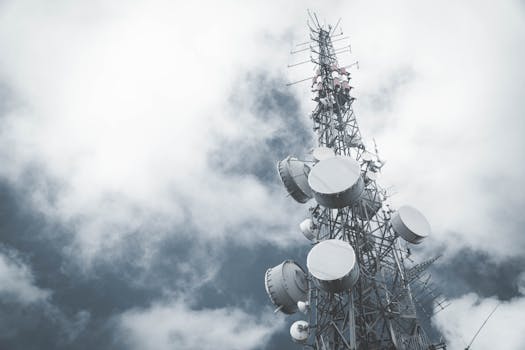
Breaking Barriers: How Recent Developments are Transforming Satellite Communication
Satellite communication has been a vital part of global communication for decades, providing connectivity to remote and underserved areas. Breaking Barriers: How Recent Developments are Transforming Satellite Communication is an essential aspect of modern life, and recent developments are transforming the industry in exciting ways. In this article, we will explore the recent advancements in satellite communication and their impact on the industry.
Introduction to Satellite Communication
Satellite communication involves the use of satellites orbiting the Earth to transmit and receive data, voice, and video signals. This technology has been used for various purposes, including television broadcasting, telecommunications, and navigation. Satellite communication has several advantages, including global coverage, high bandwidth, and reliability. However, it also has some limitations, such as high latency, signal interference, and expensive equipment costs.
Despite these limitations, satellite communication has been widely used in various industries, including telecommunications, broadcasting, and navigation. The recent developments in satellite communication are aimed at addressing the existing limitations and making the technology more efficient, affordable, and accessible.
Recent Developments in Satellite Communication
There have been several recent developments in satellite communication that are transforming the industry. One of the significant advancements is the launch of low-Earth orbit (LEO) satellites. LEO satellites are orbiting the Earth at an altitude of around 160-2,000 km, which is much lower than the traditional geostationary orbit (GEO) satellites. LEO satellites have several advantages, including lower latency, higher bandwidth, and lower equipment costs.
Another significant development is the use of advanced materials and technologies, such as phased arrays and digital signal processing. These technologies have enabled the development of smaller, lighter, and more efficient satellites that can be launched at a lower cost. Additionally, the use of reusable launch vehicles has significantly reduced the cost of launching satellites into orbit.
The development of satellite constellations is another recent trend in satellite communication. Satellite constellations involve a large number of satellites working together to provide global coverage and high-bandwidth connectivity. These constellations are being developed by several companies, including OneWeb, SpaceX, and Amazon Kuiper Systems.
Impact of Recent Developments on the Industry
The recent developments in satellite communication are having a significant impact on the industry. The launch of LEO satellites and satellite constellations is expected to increase the global satellite communication market size, which is projected to reach $7.8 billion by 2027. The use of advanced materials and technologies is also expected to drive innovation and reduce costs in the industry.
The development of satellite constellations is also expected to enable new applications and services, such as global broadband connectivity, IoT connectivity, and precision agriculture. These applications and services are expected to drive growth and innovation in various industries, including telecommunications, agriculture, and transportation.
However, the recent developments in satellite communication also pose some challenges, such as regulatory issues, spectrum interference, and space debris. These challenges need to be addressed through international cooperation, regulatory frameworks, and sustainable practices.
Conclusion
In conclusion, the recent developments in satellite communication are transforming the industry in exciting ways. The launch of LEO satellites, satellite constellations, and the use of advanced materials and technologies are expected to drive innovation, reduce costs, and increase global connectivity. However, the industry also faces some challenges, such as regulatory issues, spectrum interference, and space debris, which need to be addressed through international cooperation and sustainable practices.
As the satellite communication industry continues to evolve, it is essential to stay informed about the latest developments and advancements. By doing so, we can unlock the full potential of satellite communication and enable new applications and services that can benefit humanity.




